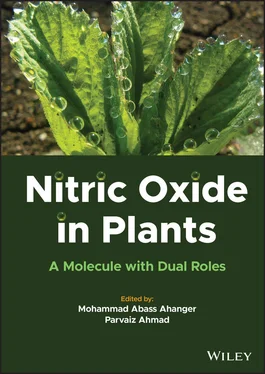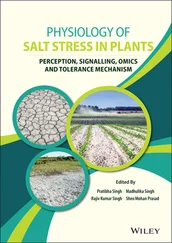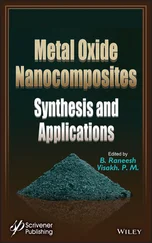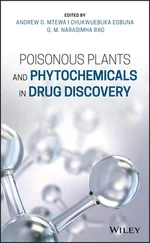Nitric Oxide in Plants
Здесь есть возможность читать онлайн «Nitric Oxide in Plants» — ознакомительный отрывок электронной книги совершенно бесплатно, а после прочтения отрывка купить полную версию. В некоторых случаях можно слушать аудио, скачать через торрент в формате fb2 и присутствует краткое содержание. Жанр: unrecognised, на английском языке. Описание произведения, (предисловие) а так же отзывы посетителей доступны на портале библиотеки ЛибКат.
- Название:Nitric Oxide in Plants
- Автор:
- Жанр:
- Год:неизвестен
- ISBN:нет данных
- Рейтинг книги:5 / 5. Голосов: 1
-
Избранное:Добавить в избранное
- Отзывы:
-
Ваша оценка:
- 100
- 1
- 2
- 3
- 4
- 5
Nitric Oxide in Plants: краткое содержание, описание и аннотация
Предлагаем к чтению аннотацию, описание, краткое содержание или предисловие (зависит от того, что написал сам автор книги «Nitric Oxide in Plants»). Если вы не нашли необходимую информацию о книге — напишите в комментариях, мы постараемся отыскать её.
Examines the beneficial roles of nitric oxide in growth and stress tolerance regulation through its involvement in tolerance mechanisms Nitric Oxide in Plants: A Molecule with Dual Roles
Nitric Oxide in Plants: A Molecule with Dual Roles
Nitric Oxide in Plants — читать онлайн ознакомительный отрывок
Ниже представлен текст книги, разбитый по страницам. Система сохранения места последней прочитанной страницы, позволяет с удобством читать онлайн бесплатно книгу «Nitric Oxide in Plants», без необходимости каждый раз заново искать на чём Вы остановились. Поставьте закладку, и сможете в любой момент перейти на страницу, на которой закончили чтение.
Интервал:
Закладка:
Plants have practical homologs of animal caspases, known as metacaspases (Bozhkov et al. 2005). Belenghi et al. (2007) recently demonstrated that A. thaliana metacaspase nine (AtMC9) is rendered inactive by S -nitrosylation of a cysteine residue in AtMC9. In turn, the mature form of this necrobiosis fiduciary is resistant to S -nitrosylation by NO. Exogenous NO promoted necrobiosis in Arabidopsis suspension cells in amounts comparable with those produced by cells challenged with an avirulent bacterium (Clarke et al. 2000). However, reactions between NO and H 2O 2produce either singlet oxygen or free radicals (Noronha-Dutra et al. 1993), which might cause necrobiosis. A simultaneous rise in NO and H 2O 2triggered necrobiosis in soybean and tobacco cell suspensions, but a rise in only one of the preceding variables promoted necrobiosis very modestly (Delledonne et al. 1998; de Pinto et al. 2002). Furthermore, microscopic anatomy studies revealed that either injection of NO donors or a change in H 2O 2level has no effect on HR in infected oat cells, despite the fact that each molecule was required for the initiation of death in neighboring cells (Tada et al. 2004). The mechanism by which NO and H 2O 2kill remains mostly unclear. The reaction of NO with O 2creates peroxynitrite, an exceedingly poisonous chemical for animal cells that mediates necrobiosis. ONOO −is relatively nontoxic to plants (Delledonne et al. 2001). However, it has been shown that ONOO −stimulates pathogenesis-related protein (PR-1) accumulation in tobacco leaves (Durner and Klessig 1999) and supermolecule nitration modulates cell oxido-reduction status (Delledonne et al. 2001). Furthermore, it was demonstrated that whereas peroxynitrite was responsible for the death of most Arabidopsis cells in response to avirulent Pseudomonas syringae , scavenging of this ion did not result in efficient defense against avirulent bacterium (Alamillo and Garcia-Olmedo 2001).
NO, when rebuilt into a peroxynitrite particle, may join forces in killing microorganisms (Durner and Klessig 1999; Romero-Puertas et al. 2004), though it has not been determined if NO and its derivatives are directly hazardous to plant diseases (Garcia-Olmedo et al. 2001). In vitro, it was undeniable that the growth of virulent and avirulent Pseudomonas bacterium was stifled by both NO and the plant system producing peroxynitrite (sodium nitroprusside + hypoxanthine/xanthine oxidase) (Noronha-Dutra et al. 1993; Garcia-Mata and Lamattina 2002). Romero-Puertas et al. (2004) proposed that ONOO −might be continuously synthesized in healthy cells, implying that plants may evolve certain detoxifying mechanisms. Ascorbates may have a significant role in the inactivation of ONOO −in animal cells (Arteel et al. 1999). Given that vitamin C (AsA) is a quantitatively dominant inhibitor in plant cells (Smirnoff 2000), it is possible that AsA also contributes to ONOO −breakdown in plant cells. The genetic composition of the plant (R genes) and the microbe (avr) seems to be strongly related to early NO production, referred to as NO burst (Mur et al. 2005; Bennett et al. 2005). Prompt gas generation (30–45 min after inoculation) was seen in noncompatible systems of P. s . pv. phaseolicola –tobacco and P. s . pv. tomato–Arabidopsis . This early NO burst happened six hours before the appearance of obvious HR-type death signs and directly preceded H 2O 2production. As proof, plants injected with a mutant of the avirulent bacterium (hrp) incapable of supplying the avr supermolecule to the plant showed a lack of NO emission (Mur et al. 2005).
The use of fluorescent dyes in cytochemical methods has made it possible to present the mechanics of NO generation inside the stratum of tobacco leaves treated with cryptogein. After tissue treatment, a supermolecule elicitor derived from the morbific plant life Phytophthora cryptogea stimulated NO buildup at several minute intervals (Foissner et al. 2000). In turn, Prats et al. (2005) discovered a significant, transient rise in NO level before programmed death of barley dermal cells infected with Blumeria graminis f. sp. Hordei using DAF-2DA (5,6-diaminofluorescein diacetat) dye. Furthermore, Zeier et al. (2004) isolated an Arabidopsis transgenic line with overexpression of nitric oxide dioxygenase (NOD) gas, an accelerator catalyzing the twofold reaction of NO to nitrates. Transgenic plants treated with an avirulent strain of P.s . pv. tomato avr B showed decreased NO production and a significantly lower mortality rate, confirming that NO is required for HR stimulation. According to Modolo et al. (2006), P. syringae is diminished concurrently in NR-deficient double mutants (Nia1 and Nia2) of Arabidopsis because these plants lack l-arginine and NO 2, endogenous precursors for NO production.
Until recently, it was thought that HR is only seen in incompatible relationships, where the plant has a resistance gene encoding R and the microbe has a virulence gene, avr (Levine et al. 1994). However, it has recently been demonstrated that HR of host cells may also arise in plants to partially protect against a specific microbe and only in the situation of non-host-kind resistance (Vleehouwers et al. 2000).
The majority of the evidence demonstrating that NO works as a messenger in gene-for-gene defensive responses was gained by studying completely separate plant–biotrophic microbe systems (Delledonne 2005). It has yet to be confirmed what part NO plays inside the plant and the necrotrophic pathogen. In a review in 2004 Van Baarlen noted that the formation of endogenous NO and H 2O 2was recorded in distinction to the compatible interaction, i.e. during disease development of liliaceous plant and Botrytis elliptica . Another event associated with plant resistance in which NO appears to be involved is phytoalexin buildup (Able 2003). Exogenous NO stimulated the accumulation of rishitin in potato tubers. Furthermore, the outcome of this compound’s inhibited production was identified after the use of a NO scavenger (Noritake et al. 1996). Several times after NO treatment of soybean cotyledons, the production of particular phytoalexins was identified (Modolo et al. 2002). NO could also play a role in the emergence of general systemic acquired resistance (SAR). In tobacco, exogenous NO increases the accumulation of salicylic acid, which plays a key role in SAR (Durner et al. 1998). Activation of the PR-1 macromolecule, produced by NO, occurs with the participation of SA, because an identical result was not seen in transgenic plants unable to accumulate SA (NahG). Furthermore, disease spots formed by tobacco mosaic virus (TMV) on leaves pretreated with NO were dramatically decreased as compared with transgenic plants. SAR was lowered by using inhibitors specific for animal NOS or NO scavengers (Song and Goodman 2001). As a result, our findings suggest that NO plays an important role in the development of a distal signal network, resulting in increased SAR in tobacco.
NO may be transferred to plants in the form of nitrosoglutathione (GSNO), much as in mammals’ vascular systems (Durner and Klessig 1999). It is hypothesized that GSNO may act as both an intracellular and organismal NO carrier, and that it is distributed throughout the plant via vascular tissue bundles. Glutathione-dependent formaldehyde dehydrogenase (GS-FDH)/I-nitrosoglutathione reductase (GSNOR) may play an important role in turning off/on the NO or GSNO signal, as well as modifying the amount of intracellular thiols, which may cause nitrosative stress (Diaz et al. 2003). In Arabidopsis , Feechan et al. (2005) discovered that the deletion of AtGSNOR1, an S -nitrosoglutathione enzyme, resulted in an increase in cellular S -nitrosothiols, which was correlated with a decrease in resistance to microbial infection. Throughout the prevalence of avirulent microorganisms and the consequent hypersensitized response, NO demonstrates an unusually wide range of affinities to a variety of signaling chemicals. The popularity of an avirulent microbe is associated with a robust aerobic burst, during which there is a redoubled creation of ROS/RNS, primarily superoxide (O 2 •), peroxide (H 2O 2), or gas (NO), and the commencement of an avirulent microbe. In soybean cell suspension infected with avirulent P. syringae pv. glycinea , treatment with NO donor, sodium nitroprusside, significantly increased the induction of death by exogenous H 2O 2or ROS (Delledonne et al. 1998). This response was significantly inhibited not solely by the NO scavenger 2-4-carboxyphenyl-4,4,5,5-tetramethylimidazoline-1-oxyl-3-oxide (CPTIO), but additionally by diphenyleneiodonium, a substance in the leukocyte NADPH enzyme that inhibits the plant oxidative burst, and by an enzyme that destroys H 2O 2; NO reacted synergistically, resulting in a 10-fold increase in ROI-induced death (Delledonne et al. 1998).
Читать дальшеИнтервал:
Закладка:
Похожие книги на «Nitric Oxide in Plants»
Представляем Вашему вниманию похожие книги на «Nitric Oxide in Plants» списком для выбора. Мы отобрали схожую по названию и смыслу литературу в надежде предоставить читателям больше вариантов отыскать новые, интересные, ещё непрочитанные произведения.
Обсуждение, отзывы о книге «Nitric Oxide in Plants» и просто собственные мнения читателей. Оставьте ваши комментарии, напишите, что Вы думаете о произведении, его смысле или главных героях. Укажите что конкретно понравилось, а что нет, и почему Вы так считаете.












